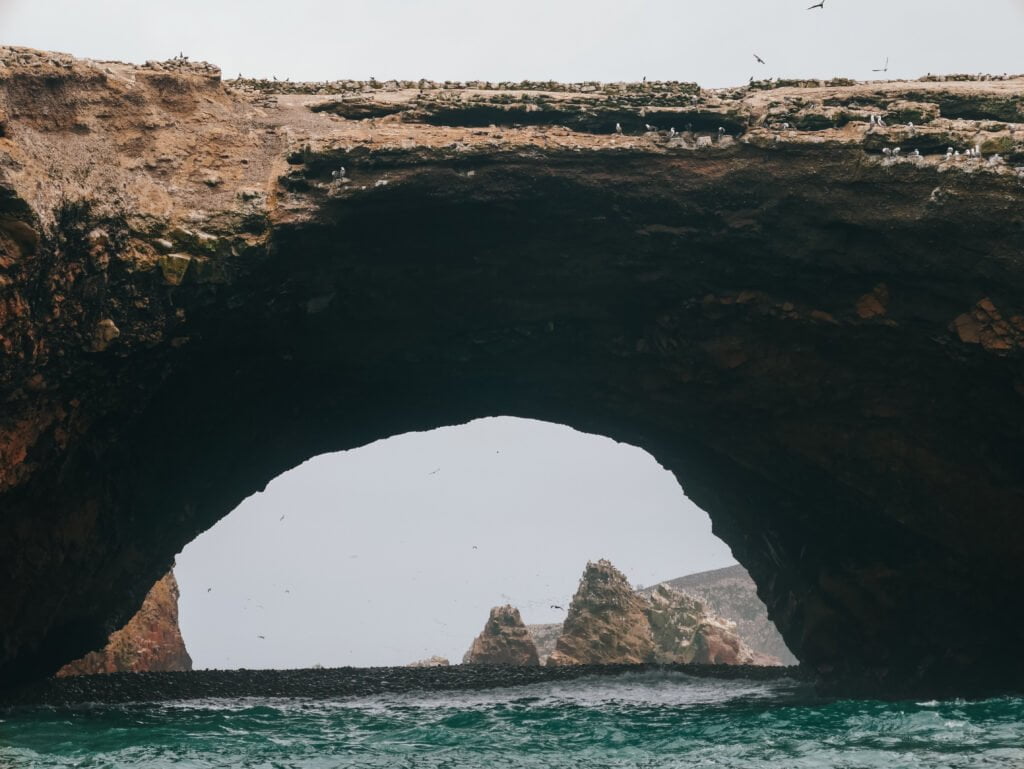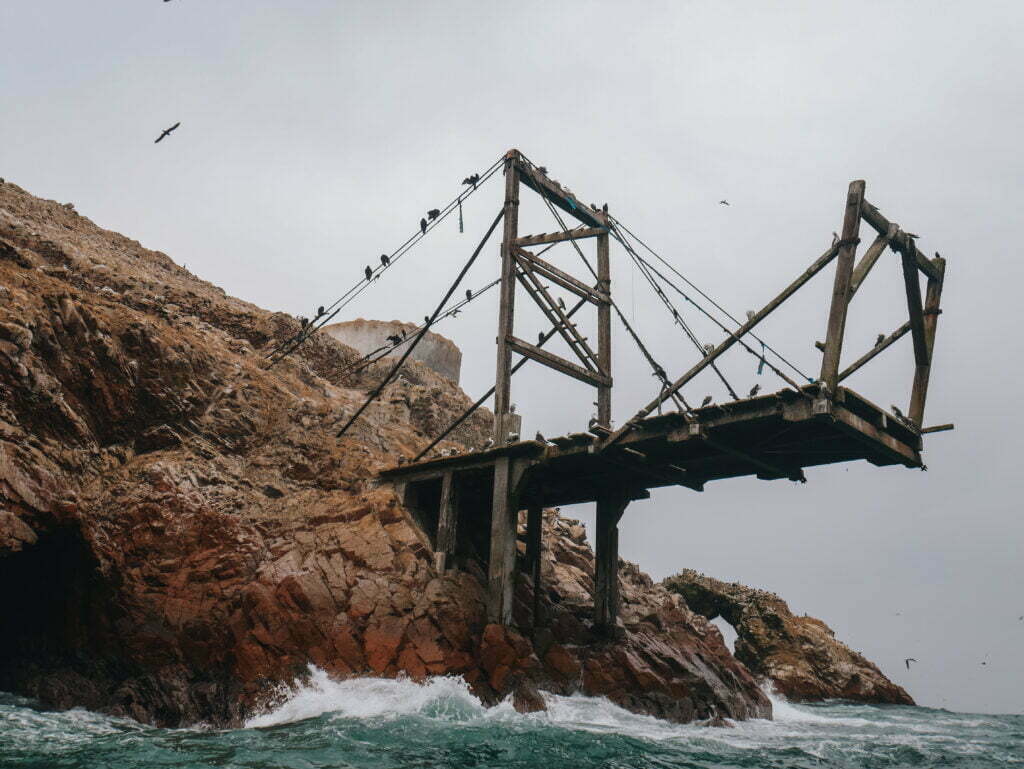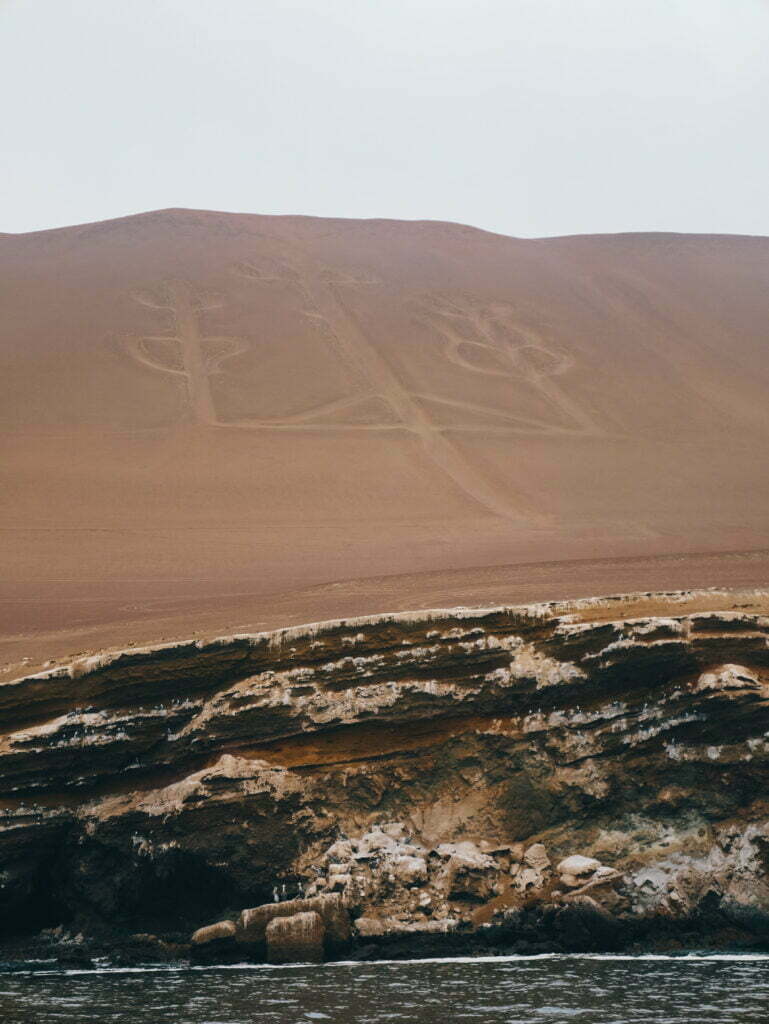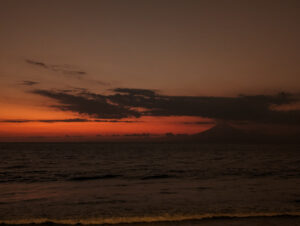The lengthy coast of Peru is primarily arid landscape, with desert valleys, dunes, and rocky cliffs and isles. Despite the natural areas between the country’s major seaside cities and towns seeming quite barren, the coast is an important ecosystem and home to a wide array of wildlife that thrive there. Las Islas Ballestas are a set of islands that sit south of Lima, and many come here to spot wildlife and witness the unique beauty of the Peruvian coast.
There are various ways to experience Islas Ballestas and we think that exploring the coastline around Lima is worth it if you have the time. We’ll outline options for visiting the isles and cover the highlights of our tour below.

About Islas Ballestas
Islas Ballestas sit within a national reserve just off the coast of Paracas. The islands are small and rocky, some containing unique formations like arches and caves that can be seen by boat. While they are uninhabited by humans, a wide array of wildlife live here.
The Humboldt Current flowing by the coastline brings nutrient-rich waters and ideal fishing conditions essential to this ecosystem. As a result, sea lions, fur seals, migrating whales, dolphins, crustaceans, and many different species of fish and birds can be seen here.
Visitors are not permitted to set foot on the islands in an effort to protect this habitat. Historically, many Peruvian coastal ecosystems suffered heavily due to the extensive mining of guano. Guano, formed from accumulated bird poop, was most commonly used as fertilizer before the development of an artificial alternative. Today, many of the isles and coastal areas of Peru have regulations in place to protect these areas from being overexploited by mining endeavors, overfishing, tourism, etc.

Visiting Islas Ballestas
There are many tour options that include a boat trip to Islas Ballestas. We were staying in Paracas, so we opted to take a tour from there. If you want to see other highlights in this area, such as Paracas National Reserve, staying in Paracas is a great option and tours from there are generally cheaper.
However, if you don’t have time to fit a stay in Paracas into your plans, there are many other tour options from Lima and Ica. Paracas is about three and a half hours away from Lima, so tours are generally full-day or two-day excursions. Ica is only about an hour away, so tours from there are generally a bit shorter. Itineraries from Ica and Lima vary, some including visits to Huacachina, the Nazca Lines, Paracas National Reserve, and other highlights in addition to the Islas Ballestas.
If you’re planning to take a tour from Ica or Lima, we recommend looking at the various options in advance and booking ahead of time, especially during peak season. Many tour options are listed on sites such as Get Your Guide and Viator, but there are tour offices in Lima and Ica as well.
We booked our tour from Paracas the morning of after doing some research the days prior. But if you have a tight schedule or specific tour/company in mind, it is better to book in advance. Boats to the islands leave daily from Paracas at 8 a.m. and 10 a.m. Many of the tour operators in Paracas have similar offerings.

Our Islas Ballestas Tour Experience
Overview:
Tour Cost: About USD$20-$25 per person from Paracas. Smaller boats with covers, private tours, and tours from Lima and Ica will cost more. The fee to access the reserve is just under USD$5.
Tour Duration: Most of the boat tours last around 2 hours
Included: Boat to and from islands, bilingual guide (some include an audio guide). Again, for more expensive tour options, some may include refreshments and other perks.

…
After buying our tickets, we boarded our boat at the indicated pier and put on the lifejackets handed to us. Our boat headed out from Paracas, following the desolate coastline. We found the blue water against the desert landscape to be unique and beautiful.
Along the way, we passed El Candelabro. This massive candlestick or plant-shaped glyph is etched into the hillside and is clearly visible from the sea. Like the Nazca Lines, there is a lot of mystery surrounding it, such as exactly what it depicts and what its purpose was. Specialists aren’t even sure who created it or when, but based on artifacts found in the area, they estimate around 200 BCE.

We headed further out to sea and shortly, we reached the islands. Our boat slowly cruised among them, skirting closely to the rocky formations. Boobies, gulls, various cormorants, pelicans, and other birds soared above us, plunged into the water, and sat perched on outcroppings. They were everywhere! We were also thrilled to see the Humboldt penguins.
Among the throngs of birds were the sea lions swimming around the boat and chilling on the rocks. We saw large males along with little babies. We enjoyed just watching the wildlife in their natural habitat. After cruising among the islands for a while, we headed back to Paracas.

What to Bring
Water
Camera: To capture the unique landscape and variety of wildlife you’ll see.
Sun Protection: Most of the tour boats are uncovered, so bring sunglasses, sunscreen, and a hat (just watch your hat in the wind).
Motion Sickness Medication: If you get queasy easily, it’s a good idea to take some motion sickness medication before embarking on the boat.
Light Jacket: Sea breeze and cooler, cloudy mornings may require a light jacket/windbreaker.
Tissues/wipes: There is a chance you’ll get pooped on by the flying birds.
Ticket: Don’t forget your ticket or proof of reservation to present upon boarding.
Cash: Some extra soles to tip your guide and pay the reserve and port fee.
Like this Post? Pin it!




